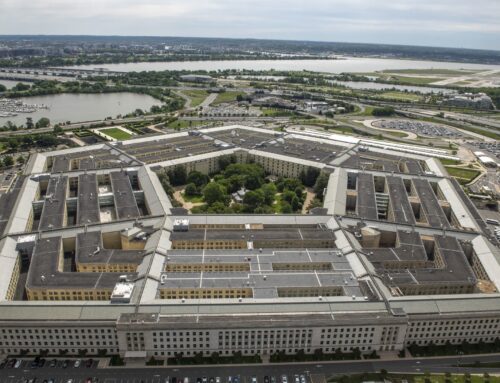The Department of Homeland Security (DHS) program to track arrival and departure of foreign visitors has been mired in technical problems, cost overruns and delays ever since it was a gleam in Congress’ eye more than a decade ago. We wrote about the aimless program in 2005, and unsurprisingly not too much has changed except that we now have spent more than $2.2 billion on it.
The original plan for U.S. Visitor and Immigration Status Indicator Technology (US-VISIT) was to use stuff like digital facial recognition, voice recognition and retinal scans to track foreign nationals arriving at and departing the nation’s airports, seaports and land points of entry. This would allow DHS to detain persons of interest at the border and detect visa overstays. Rather than use this new gadgetry, however, the agency settled on good old-fashioned fingerprint scans. Hooray.
But the fingerprint scans have had problems. Originally, DHS was only going to use thumb prints, which didn’t meet the FBI’s 10-digit identity and accuracy standards. Eventually, common sense prevailed and now fingerprints will be scanned from all 10 digits. The system will also connect with the FBI database and nine other informational programs tracking foreign nationals coming to this country. The first 10-digit scanner was deployed at Dulles Airport late last year and is supposed to deploy to all points of entry by the end of 2008.
But a new report by the Government Accountability Office has found that while the entry identification capability is present and improving at roughly 300 points of entry across the country, the back end – tracking the exits of those foreign visitors – is virtually nonexistent. As the GAO writes, “Despite long-standing legislative requirements and a sizeable investment of time and resources, DHS has yet to clearly define the second major component of its strategic solution – exit.”
DHS promises on US-VISIT continue to sink in vague timelines and unrealistic commitments. Pledging an airport exit-verification process by the end of this year is foolhardy. The agency has already blown through a few deadlines, and current plans to integrate the effort with existing commercial airline security seem difficult and time-consuming at best.
The challenge of tracking exit from the United States is incredibly difficult. But if US-VISIT cannot track exits—a critical requirement—documenting visa overstays is a lost cause. DHS has not even figured out the costs of implementing this critical portion of the program.
As the GAO investigators write, “Even though the program is now into its sixth year of activity, and more than a billion has been invested in it … DHS has yet to fully define and economically justify a comprehensive exit capability, including a plan describing what the capability will be, and how, when, and at what cost it will be delivered… it continues to invest in the program without first knowing that its decision will produce cost-effective and affordable results.”
Like many DHS programs, US-VISIT seems to pursue a strategy of “more spending equals more security.” However, if our legislators don’t start spending wisely and effectively on strategic solutions, the high cost of homeland security boondoggles will only make us more vulnerable.











Get Social